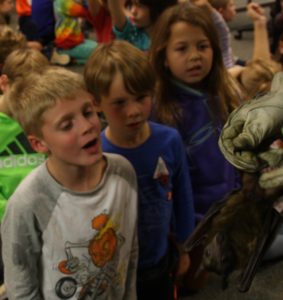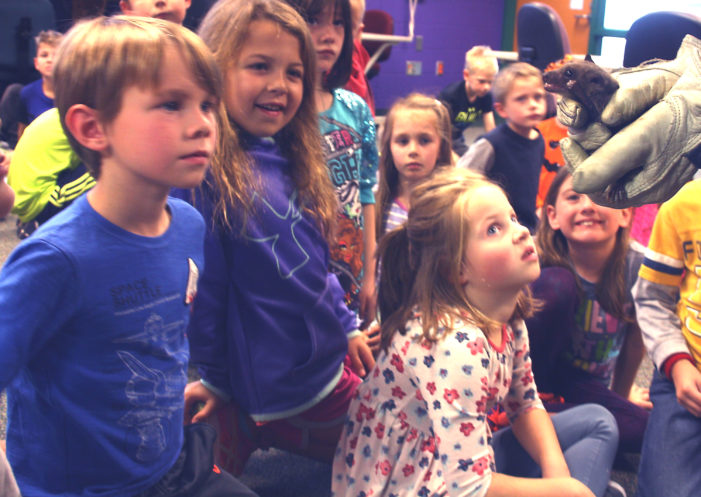Jacob Schmitz checks out an Egyptian Fruit Bat.
BY JESSICA STEELEY
Clarkston News Staff Writer

Second graders at Independence Elementary learned about the importance of bats and their conservation during a presentation featuring four live bats.
“There’s a lot of misinformation out there about bats, and so, the more we can teach people that bats aren’t bad, the better their reputation is,” Organization for Bat Conservation Educator Kelsey Lang said.
Lang presented to students about different types of bats and how they help the environment, then went around and gave kids a close-up look at four different types of bats: a Big Brown Bat, Jamaican Leaf-nosed Bat, Egyptian Fruit Bat, and Straw-coloured Fruit Bat.
“Bats are actually really cute and it’s usually very surprising for them, because they think that bats are supposed to be these scary things,” Lang explained. “Just to get them to see the bats up close and see that they’re not these terrible blood-sucking monsters is really helpful for bat reputation.”
The presentation included ways to help bats, such as building a bat house, planting a garden, and, most importantly, Lang said, educating their friends and family about bats.
“There are three main things bats do for us,” Lang said. “There are insectivores, they help to control pests, make it so farmers can use less pesticides, which makes our food healthier for us. There are pollinators, who spread pollen and help to make new trees, and then there are seed dispersers. A lot of bats are fruit bats, they eat fruit and they disperse seeds.”
Lang and other educators travel the state presenting at schools, libraries and museums about bat conservation and education. They also attend bat festivals throughout the country and offer tours at their facility in Pontiac, the Bat Zone.
“We have 200+ animals, most of them are bats, and our main purpose, our big mission, is to teach people about bats and try to get them to be interested in conservation,” Lang said. “So, we do conservation through education.”





